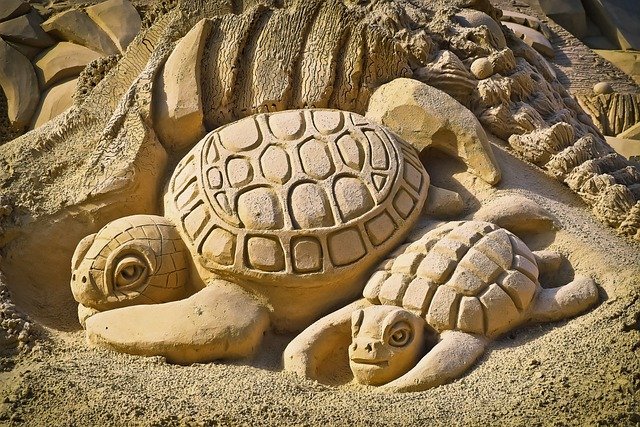The Ephemeral Canvas: Sandcastle Art's Cultural Ascendance
In a world of fleeting digital content, sandcastle art emerges as a poignant metaphor for impermanence and creativity. This ancient yet evolving form of expression has recently captivated global audiences, transforming from a casual beach pastime to a respected artistic medium. As environmental awareness grows and the art world seeks sustainable practices, sandcastle art stands at the forefront of a cultural shift, challenging our perceptions of permanence, value, and the very nature of art itself.

From Buckets to Masterpieces
The 1970s marked a turning point for sandcastle art, with the emergence of professional sand sculptors and organized competitions. Pioneers like Gerry Kirk and Todd Vander Pluym began pushing the boundaries of what was possible with sand, developing new techniques and tools that allowed for increasingly elaborate and awe-inspiring creations. This period saw sandcastle art transition from a children’s activity to a respected form of artistic expression.
The Science of Sand
Understanding the physics of sand is crucial to creating lasting sculptures. Professional sand artists work with a specific type of sand, often imported from quarries, that contains angular grains and a precise moisture content. This allows for compaction and stability, enabling sculptures to reach heights of over 40 feet and last for weeks or even months with proper maintenance. The process involves a delicate balance of water, sand, and air, with artists using a variety of tools from hand trowels to industrial compactors.
Global Recognition and Cultural Impact
In recent years, sandcastle art has gained significant traction in the international art scene. Major festivals like the Fulong International Sand Sculpture Art Festival in Taiwan and the Sandsation in Berlin draw hundreds of thousands of visitors annually. These events not only showcase incredible artistic talent but also serve as platforms for cultural exchange and environmental awareness.
The Intersection of Art and Environmentalism
As the world grapples with climate change and environmental degradation, sandcastle art has taken on new significance. Many artists use their sculptures to highlight ecological issues, creating powerful visual metaphors for the fragility of our planet. The temporary nature of sand sculptures also aligns with growing interest in sustainable and non-invasive art forms, challenging the traditional notion that art must be permanent to be valuable.
Educational and Therapeutic Applications
Beyond its artistic merits, sandcastle building has found applications in education and therapy. Schools have incorporated sand sculpture workshops into their curricula, using the medium to teach principles of physics, geology, and teamwork. In therapeutic settings, sand play has been recognized for its calming effects and ability to facilitate emotional expression, particularly in children and individuals with communication difficulties.
The Digital Age Paradox
In an era dominated by digital media, the tactile and ephemeral nature of sandcastle art offers a refreshing counterpoint. While sand sculptures are inherently temporary, their images circulate widely on social media platforms, creating a fascinating juxtaposition between the physical and digital realms. This has led to increased visibility for sand artists and a growing appreciation for the art form among younger generations.
Challenges and Controversies
Despite its rising popularity, sandcastle art faces several challenges. Environmental concerns about sand mining and beach erosion have led to restrictions in some areas. Additionally, the commercialization of the art form has raised questions about authenticity and the balance between artistic integrity and financial viability. Some critics argue that the emphasis on spectacle in large-scale sand sculpture events detracts from the art’s more contemplative aspects.
The Future of Sand Art
As sandcastle art continues to evolve, new trends are emerging. Some artists are experimenting with mixed media, incorporating found objects or light projections into their sand sculptures. Others are pushing the boundaries of scale and complexity, creating entire sand cities or interactive installations. The integration of augmented reality technology is also opening up new possibilities for engagement and preservation.
Conclusion
Sandcastle art stands as a testament to human creativity and our complex relationship with nature. Its rise from humble beginnings to international recognition reflects broader shifts in our cultural values and artistic sensibilities. As we face an uncertain future, the transient beauty of sand sculptures reminds us of the importance of living in the moment and appreciating the fleeting wonders that surround us. In a world often fixated on permanence and accumulation, sandcastle art offers a powerful alternative narrative, inviting us to find joy and meaning in the ephemeral.





